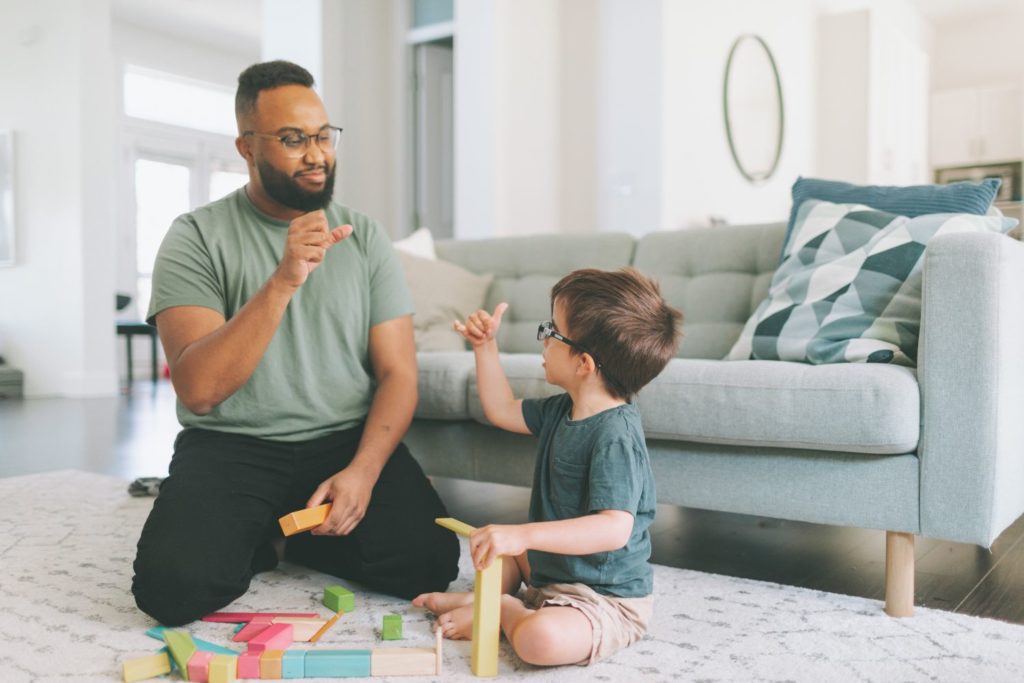Baby sign language is a wonderful way to enhance communication with your little one before they can speak. Here’s when to ask your pediatrician about the benefits of baby sign language and how to get started.
Why Baby Sign Language Matters
Teaching your baby sign language can reduce frustration, enhance communication, and promote cognitive development. It’s a great tool for both parents and babies.
Signs It’s Time to Ask About Baby Sign Language
When should you discuss baby sign language with your pediatrician? Here are some signs:
- Early Interest: If your baby shows an early interest in communication and gestures.
- Frustration: If your baby seems frustrated trying to communicate their needs.
- Developmental Boost: If you’re interested in giving your baby a developmental boost in language skills.
Questions to Ask Your Pediatrician
When discussing baby sign language, consider these questions:
- What are the benefits of baby sign language?
- When should I start teaching my baby sign language?
- What are the best signs to start with?
- How can I integrate sign language into our daily routine?
- Are there any resources or classes you recommend?

Benefits of Baby Sign Language
Enhanced Communication
- Early Communication: Allows babies to express their needs before they can speak.
- Reduced Frustration: Helps reduce frustration by giving babies a way to communicate.
Cognitive Development
- Language Skills: Supports the development of language skills and vocabulary.
- Memory and Attention: Enhances memory and attention skills.
Emotional Benefits
- Bonding: Strengthens the bond between parents and babies through shared communication.
- Confidence: Boosts your baby’s confidence by enabling them to express themselves.
Getting Started with Baby Sign Language
When to Start
- 6-8 Months: Many parents start teaching baby sign language when their baby is around 6-8 months old.
- Earlier or Later: You can start earlier or later depending on your baby’s interest and readiness.
Choosing Signs
- Basic Needs: Start with signs for basic needs like “milk,” “eat,” “more,” and “all done.”
- Daily Routine: Incorporate signs related to your baby’s daily routine, such as “bath,” “sleep,” and “diaper.”
Teaching Methods
- Consistency: Be consistent in using signs during daily activities.
- Repetition: Repeat signs frequently to reinforce learning.
- Combine with Words: Always say the word while making the sign to help your baby make the connection.
Integrating Sign Language into Daily Life
Mealtime
- Signs for Food: Use signs for different foods and mealtime activities.
- Interactive: Encourage your baby to use signs to indicate when they want more or are all done.
Playtime
- Toys and Activities: Use signs for toys and activities to make learning fun.
- Songs and Games: Incorporate signs into songs and games.
Routine Activities
- Bath Time: Use signs for “bath,” “water,” and “clean.”
- Bedtime: Use signs for “sleep,” “book,” and “night-night.”
Monitoring Progress
Watch for Signs
- Recognition: Watch for signs that your baby recognizes and uses signs.
- Response: Respond positively to your baby’s use of signs to encourage continued communication.
Adjusting and Expanding
- Add New Signs: Gradually introduce new signs as your baby becomes more comfortable.
- Follow Your Baby’s Lead: Pay attention to your baby’s interests and needs when choosing new signs.
Resources for Learning Baby Sign Language
Books and DVDs
- Books: Look for books on baby sign language with clear illustrations.
- DVDs: Use DVDs that demonstrate signs and how to use them.
Classes and Online Resources
- Local Classes: Check for local baby sign language classes in your community.
- Online Videos: Utilize online videos and tutorials to learn new signs and techniques.
Baby sign language is a valuable tool that can enhance communication, reduce frustration, and promote cognitive development. By discussing your options with your pediatrician and starting with simple, consistent signs, you can enjoy the many benefits of baby sign language. Don’t hesitate to reach out to your pediatrician for guidance and support.

